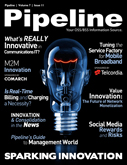|
|

P:
How does it benefit customers?
DL:
Customers want greater transparency and no risk of bill shock. They want to establish their own limits, and be warned of overages. This is not possible on a large scale with traditional batch billing and charging. Pre-paid customers already have some of these options, post-paid don't.
P:
Do we really need more complexity in billing? Haven't customers voiced a preference for less complex, flat-rate billing?
DL:
I will argue that evidence is only true because people haven't yet understood that they can get a better deal with real-time billing. Look, it happens all of the time, people choose to add complexity when it offers bettervalue. Groupon adds complexity to a person's life, it doesn't remove it. EBay adds complexity. But consumers have flocked to these services once they understand the potential for savings. It's human nature-people will try to match their spending to what their value as precisely as possible.
|
|
"Blind byte accounting and charging doesn't measure usage in any meaningful way." |
|


converged core. In theory the best unit
cost and the best customer experience
can be delivered over time by unifying
the customer information, product
catalog and billing capabilities.
P:
How does a changeover to 4G/LTE impact this discussion?
SR:
4G, regardless of network type, really just drives the usage and therefore impact of new “data” based services that will require more control capabilities to manage bandwidth, access to premium services and various bucketpricing options. The linkage between billing and policy is the key.
P:
Is money being lost through the cracks because few real-time options exist?
SR:
That really depends on the pricing
approaches being offered by the
company. An infrastructure that takes
days to deliver data usage for
|
|
|
|
|

Scott Rice, VP Production Billing, Sprint
Pipeline:
What can you tell me about real-time charging and billing from a carrier perspective?
Scott Rice:
Real-time charging and billing does need to be part of the infrastructure over the coming years but not necessarily engaged for all services. Movement toward all-IP networks and the movement of voice traffic to all IP will take time and traditional billing capabilities will remain necessary for large parts of companies’ core business.
Real time charging is really about linking the product catalog with the network through the use of policy management capabilities. There will be customers who are heavy users of real time based services, but customers who remain traditional users will remain for some time to come.
P:
Is a move to converged real-time charging and billing urgent?
SR:
Not necessarily. A valid approach
certainly is to service multiple billing
approaches (prepaid, session based,
data) from a strong core that is flexible
enough to support multiple billing and
charging approaches. It is possible to
bring in other approaches separately
without the capability being part of a
|
|

aggregation and billing does open the
possibility for leakage for the services
generally available today. However if
the current infrastructure supports
getting data usage from switch to the
biller within a shorter timeframe, for
example 15 minutes, the opportunity
for leakage is negligible. As data usage
grows even the best performing
traditional usage management and
billing capabilities will need to link to
more policy controlled real-time or very
near real-time usage aggregation,
rating and customer account balance
management.
P:
Are there on-demand services that could create new revenue that require real-time billing and charging?
SR:
Yes, everyday new ideas are being explored in the area of using the wireless data network to provide services. In the United States the pace of mass adoption of additional on-demand services which in theory will carry apremium cost is still debatable. Over time the consumer experience will most likely evolve which drives adoption of on-demand types of services.
As the available services grow real time policy managed billing and charging will need to be part of the infrastructure to determine if the customer will pay for a service, to collect payment and then to instruct the networkto deliver that service.
|
|
|






